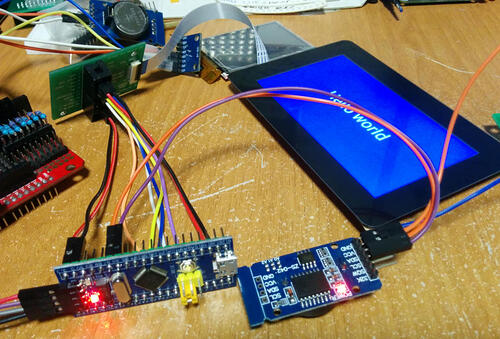As far as I can tell, it seems like the STM32 Arduino integration is not really up to par. That's not really a reflection on STM32, or Arduino even, but just the fact that there are several projects being run by various teams, and one of them hasn't "won".
My impression of the STM32 parts was that in terms of peripheral capability, they were pretty baller - obviously, they completely buried any 8-bit MCU, and they seem both more widely used, and more coherently designed, than the Atmel SAM-series of boards. Great hardware specs, in general, IIRC - they seemed like a spectacular series of parts.
As for the Arduino support for them, though... what I hear... isn't so great. It would be nice if one of the groups apparently competing to make these cores would convincingly win the war and be the obvious one to pick.
The size of the product line - coupled with more complex differences between parts (compared to something 8-bit), the fact that different people are pulling for their own favorite hardware, and the fragmented stm32-on-arduino architecture, it's no surprise that the result is uninspiring (what I most remember about STM32 was that they refuse to put everything you need to know about the chip into one file - they had several documents you had to sit there and cross reference, I despised it - I prefer the atmel/microchip approach of ginormous datasheets that have everything you need to know about a chip)
People want the support for the STM32's to be universal - like how nowadays, there's support for almost every half-decent classic AVR or fancy new AVR you might want to use on Arduino. But that's because the peripherals on the classic AVRs - they basically vary only in how many of them each chip has.
And the same is true of the new ones - tinyAVR 0-series, tinyAVR 1-series, and megaAVR 0-series, their peripherals are identical, just varies in how many of them each part has (and the tinyAVR 1-series got a few goodies that the megaAVR 0-series didn't). Note, however, that Microchip is not continuing the Atmel tradition of keeping the peripherals available mostly identical for over a decade - their DA-series ones, released very recently, kick things up a notch, and there are some notable differences...) but the variety among all all the huge number of STM32 families is just on another level.
I'd heard that STM themselves were getting involved in this. Did that ever pan out? That's the scale of resources and organization that could drive a project like that into something good.... or did they just make things worse?
In any event, I never wanted to dive into them. I found the way that the AVR's gave you the the prospect of true mastery within a non-prohibitive amount of time and thought to make them irresistible....








